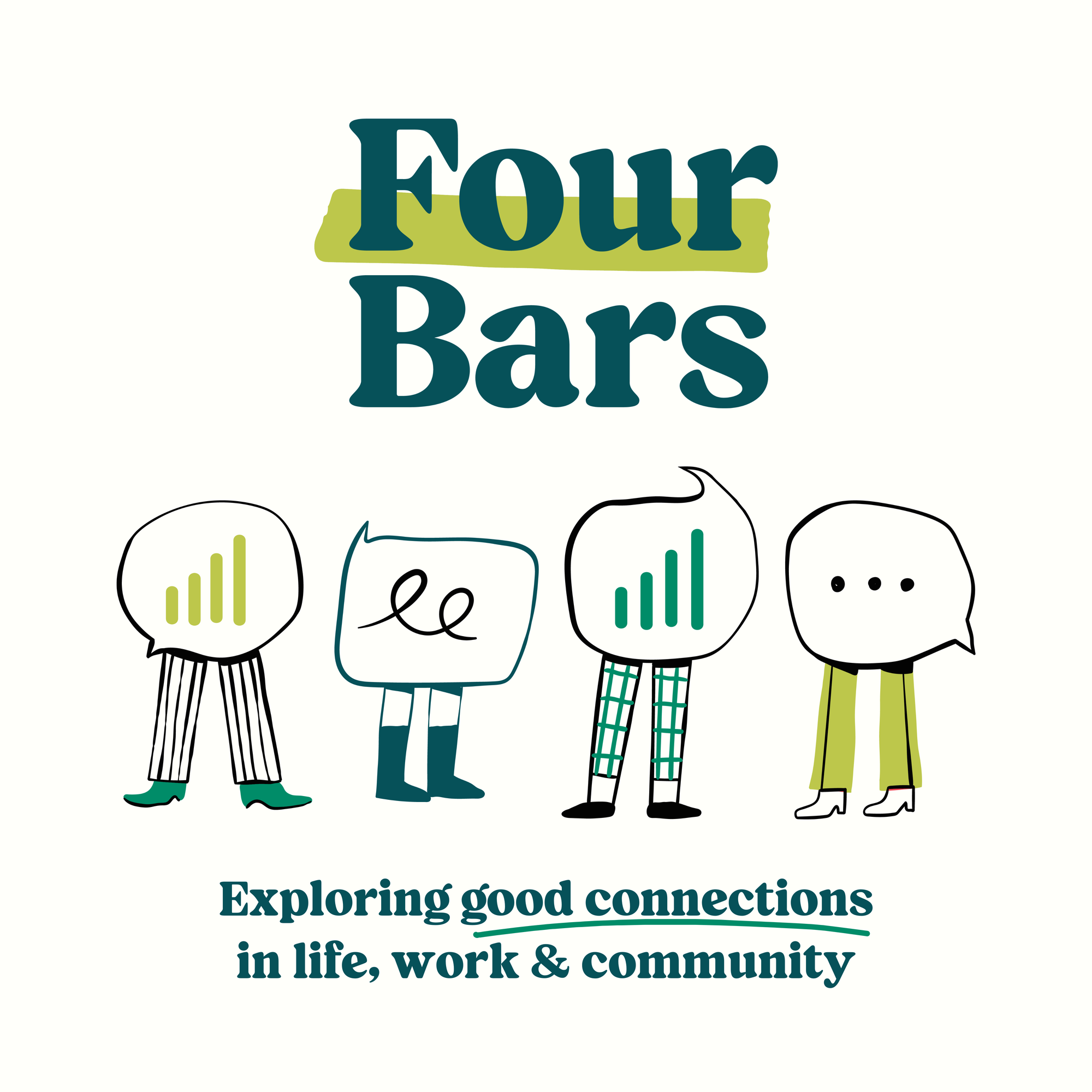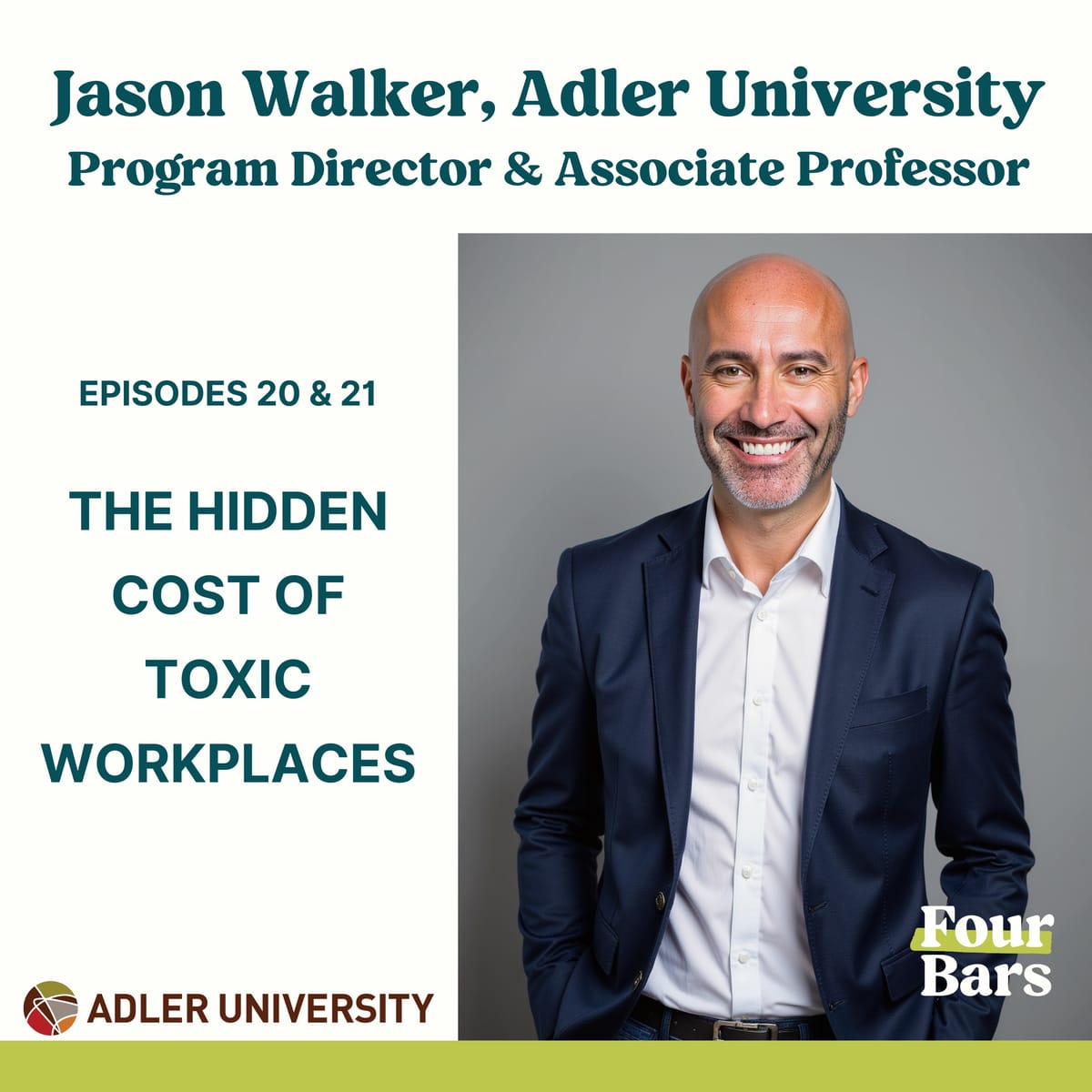What happens when the same behaviors that would prompt immediate police intervention on the street are normalized behind office doors? Dr. Jason Walker, a dual-doctorate psychologist and internationally recognized expert on workplace violence, bullying, and harassment, takes us on a compelling journey exploring this dangerous double standard.
"Why is it if you are touched sexually in an unwanted way, if you were on the street, the cops would show up? But you're at work and you're like, well, you know, talk to your manager...we'll go to HR...we're going to have to document. Who are we protecting here?" This provocative question frames our deep dive into how workplace bullying, harassment, and sexual abuse continue to thrive in professional environments.
Dr. Walker reveals how organizational blind spots and misplaced priorities create systems that protect perpetrators rather than victims. He explains why approximately 30% of American workers, a staggering 48.3 million people, experience workplace bullying within any six-month period, and why traditional responses fall devastatingly short. From the limitations of HR investigations to the dangerous practice of protecting high-performing "rainmakers" who bully, we explore the systemic failures that normalize workplace violence.
Beyond identifying problems, Dr. Walker provides transformative solutions for creating psychologically safe workplaces. He outlines practical steps organizations can take: explicitly including psychological safety in mission statements, training leaders to intervene when witnessing harmful behaviors, revamping benefit structures to properly support employees, and implementing truly effective reporting systems. For individuals experiencing workplace bullying, he offers thoughtful guidance on documentation, self-protection, and knowing when to seek a healthier work environment.
Join us for this essential conversation about workplace dignity and safety. Whether you're an organizational leader wanting to create a healthier culture or someone navigating a toxic work environment, this episode provides the clarity and tools needed to recognize, address, and prevent workplace bullying. Because as Dr. Walker emphasizes: "You have the right to go to work and be safe, and part of that is your psychological safety."
Related Resources
• Dr. Jason Walker, program director and associate professor at Adler University
• Dr. Walker on Forbes.com
• Dr. Walker’s articles for The Conversation
See also: All resources from the Four Bars Podcast
Follow and stay connected:
Website: fourbarspodcast.com
YouTube: youtube.com/@FourBarsPodcast
Instagram: @edges_Inc
Facebook: EDGES Inc.
LinkedIn: EDGES Inc.
Never miss an update—follow, subscribe, and join the conversation!
More About this Episode
Addressing Workplace Bullying as a Public Health Crisis
In far too many workplaces, silence has become a system. When bullying, harassment, or even sexual abuse occurs, the response is often mired in process rather than rooted in protection. What should be an immediate and unambiguous reaction to harm becomes a tangled maze of policy reviews, HR procedures, and corporate risk management. Dr. Jason Walker, an internationally recognized expert in trauma-informed leadership and workplace violence, bullying, and harassment, calls this the “too hard to touch pile,” and he’s sounding the alarm that it’s time we finally reach in and do something about it.
When the Workplace Fails to Protect
One of the most jarring comparisons Dr. Walker makes is between what would happen if you were assaulted or harassed on the street versus in the workplace. On the street, law enforcement is typically swift. At work, you’re advised to remain calm, document the behavior, and maybe sit in another meeting with the very person who harmed you. This disparity isn’t just frustrating, it’s dangerous. It sends a clear message about whose safety is prioritized, and too often, it’s not the victim’s.
Many organizations have become complicit, even if unintentionally, by allowing toxic behaviors to persist, especially when those behaviors come from top performers or leaders. The “rainmakers,” as Dr. Walker refers to them, are often shielded from consequences due to their perceived value to the business. But that shielding comes at a steep cost: to individuals, to teams, and ultimately, to the culture of the organization itself.
The Blind Spots That Sustain Abuse
So why do companies allow this to continue?
According to Dr. Walker, the answer lies in systemic blind spots and a lack of preparedness. HR departments, while essential, are often not adequately trained to handle serious investigations around harassment or bullying. In fact, most HR professionals have little to no formal investigative training. When a complaint arises, the question they are trained to ask is, “Was the policy followed?” instead of the far more crucial question: “Was someone harmed?”
Even more troubling is how workplace policies can be weaponized. Dr. Walker warns of a particular type of bully who manipulates internal policies and protocols to silence dissent and insulate themselves from accountability. This sophisticated form of bullying thrives in organizations that prioritize policy compliance over human well-being.
A Cultural Commitment to Psychological Safety
Dr. Walker emphasizes that companies must move from rhetoric to reality. Claiming to “value people” isn’t enough. That value must be demonstrated through action, through trauma-informed policies, real-time accountability, and daily cultural practices.
Here are some of the key shifts he suggests:
- Revise and Reinforce Values: Start by integrating psychological safety into the organization's mission and core values. If it's not written down and talked about, it won’t be prioritized.
- Move Beyond Annual Training: Most companies offer a single annual training on workplace bullying or harassment, sometimes just 10 minutes long. That’s not enough. These topics should be regular parts of team meetings, leadership summits, and onboarding.
- Talk About It: A striking moment came when Dr. Walker asked a room full of professionals how many had discussed harassment or bullying in their recent team meetings. Almost no hands went up. “We don’t even talk about it,” he said, “because we’ve normalized the behavior.”
- Intervene Immediately: When someone behaves inappropriately, leaders must call it out, in real time. This could mean pausing a meeting and revisiting a comment that crossed a line. Silence signals acceptance.
- Support, Don’t Shuffle: Too often, instead of dealing with the perpetrator, organizations move the victim to a new team or department. This only further punishes the target and allows the abuser to continue harming others.
Understanding Bullying on a Continuum
Bullying doesn’t always look like overt yelling or threats. It can manifest subtly through manipulation, gaslighting, exclusion, or strategic policy use. Dr. Walker outlines a test for identifying workplace bullying:
- Is the behavior unwanted?
- Is it harmful (emotionally, psychologically, or physically)?
- Is there a pattern of behavior?
One-off conflicts happen. But when harmful behavior repeats and escalates, it signals a deeper issue. Documentation can help identify patterns and establish the harm over time, especially when internal mechanisms try to minimize or deflect the issue.
The Criminal Implications We Ignore
It’s staggering to consider that, if someone touched you inappropriately in a public space, the police would be involved immediately. Yet, in the workplace, similar actions often lead to HR meetings and internal reviews. As Dr. Walker points out, “The test of criminal behavior is the same as it is on the street; we just treat it differently at work.”
This discrepancy underscores the need for independent oversight. Dr. Walker advocates for the creation of Inspector General–like bodies dedicated specifically to workplace violence, bullying, and harassment. With 48.3 million American workers experiencing bullying every six months, it’s clear that internal governance has failed.
Prevention Begins with Leadership
Leaders must walk the talk. That means:
- Interrupting gossip and harmful chatter
- Checking in on psychological safety in team check-ins
- Reviewing benefits through an employee-centered lens
- Making reporting safe, transparent, and non-retaliatory
Leadership is not just about hitting quarterly targets. It’s about shaping the culture and ensuring everyone feels safe to contribute without fear. That includes acknowledging when systems have failed and committing to do better.
Why It Matters Financially
If compassion and ethics aren’t compelling enough, the financial cost of ignoring these issues is massive. Consider:
- 50% of a bullied employee’s time is lost to managing the fallout—not their job
- Increased use of mental health services and medications
- Spike in short-term and long-term disability claims
- Turnover and recruitment costs
- Legal fees and settlements
- Reputational damage, which can impact both hiring and customer trust
If organizations truly want to prevent harm and create cultures where people thrive, they must start by asking themselves some hard questions:
- Are we prioritizing process over people?
- Do our values include psychological safety?
- Are we treating violent behavior at work the same way we would treat it in public?
- Are we providing the tools, training, and culture to address harm before it escalates?
Dr. Walker leaves us with a powerful framework to guide this work:
- Dream Big – Reimagine what safety could look like.
- Do What’s Right, Not What’s Easy – Get into the hard-to-touch pile and deal with what’s uncomfortable.
- Finish What You Start – If your organization claims to care about people, prove it, consistently, every day.
Workplace bullying, harassment, and abuse are not mere HR issues; they are matters of health, safety, and dignity. These are acts of violence, and they have no place in any workplace. Changing the culture starts with talking about it, training for it, and taking immediate action when harm occurs. The road to safer, more humane workplaces starts now, and it’s a journey we must all be committed to, from the boardroom to the breakroom.
If we can dream big and hold ourselves accountable, we can make the workplace a place where no one has to choose between earning a living and feeling safe. That’s a future worth building.



Member discussion: